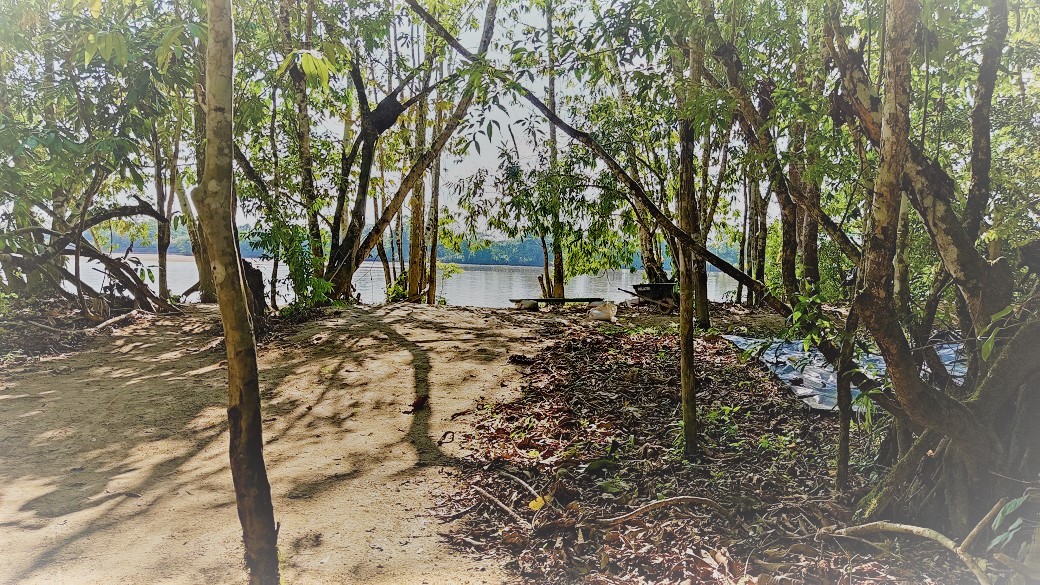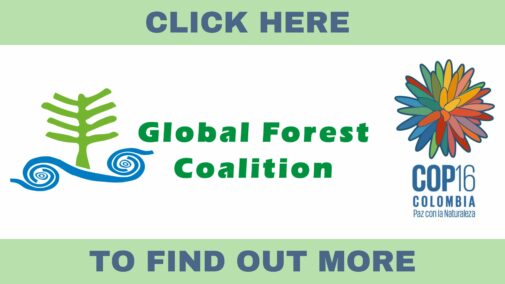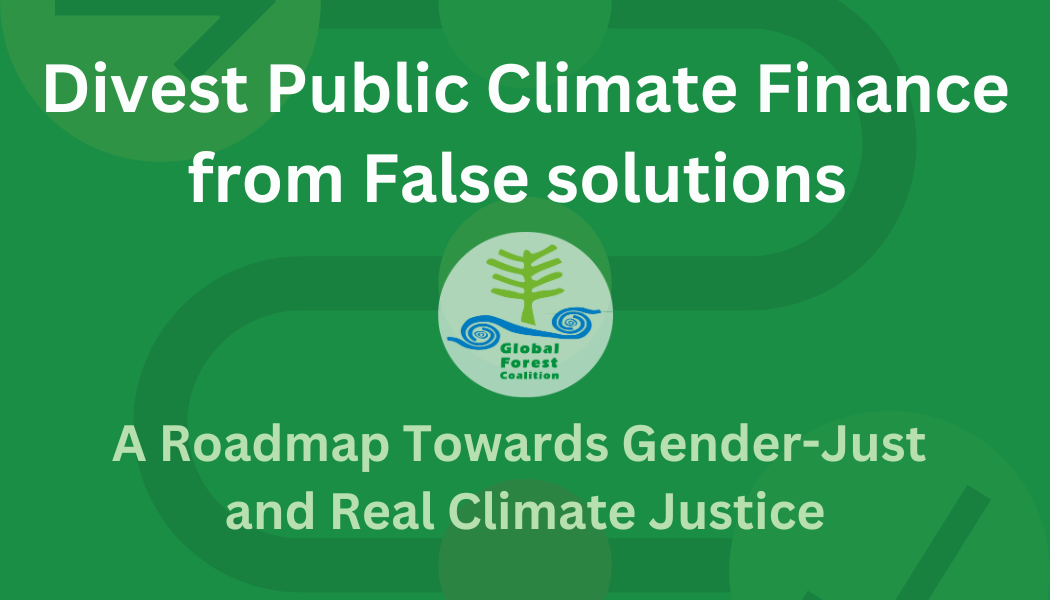Trade
Trade, International Finance And Market Mechanisms
• The rise of free trade agreements: what they are and what they cover
• Environment chapters in trade treaties
• Free Trade Treaties… more pressure on forests and forest resources
• Multilateral Environmental Agreements
• Resources (trade)
• Market-based mechanisms, the World Bank and regional development banks
• The World Bank, Carbon Markets and PES
• The Prototype Carbon Fund and the Biocarbon Fund
• REDD, the World Bank and the Forest Carbon Partnership Facility
• The World Bank’s Climate Investment Funds
• Resources (IFIs)
1 • The Rise of Free Trade Agreements: What They Are and What They Cover
Free trade agreements (FTAs) are multilateral or bilateral deals in which governments agree to open their markets to imports and commit to treating foreign suppliers in the same way that they treat domestic ones.
FTAs are used to strengthen and promote the neoliberal model of development and have been employed with increasing force in recent years. They are legal instruments that are binding, at both the international and national level, on those countries that ratify them and they cover a large number of aspects that relate to peoples’ everyday life. Usually, these FTAs include the following points:
Access to markets
Services in general, along with a few specific provisions relating to certain sectors such as telecommunications and finance
Intellectual Property Rights
Rules about what are known as non-trade issues, or the ‘Singapore issues’, which include investment, procurement, policies competition and trade facilitation
Issues relating to labor and the environment
Only the first point is genuinely relevant to free trade agreements. The second and third are new World Trade Organization (WTO) issues and the fourth set, introduced by the WTO in 1996 during the Singapore Ministerial, are still under discussion. In 2004, the WTO decided that the Singapore Issues should be excluded from what is known as the Doha agenda and negotiations were halted. Labor and environmental issues are generally also rejected as priority issues within the WTO (although there is a Committee on Trade and the Environment which has achieved very little). Yet all these issues still reappear in bilateral FTAs.
In this way, the environment is being turned into something that can be bought and sold and, on many occasions, attempts to protect it are seen as barriers to trade that need to be eradicated. For example, if a law or regulation is regarded as a barrier to trade, it can be challenged in front of various bodies that advocate free trade. For the regulation to remain it is necessary to demonstrate its worth to these bodies, proving that it is indeed the only measure that can be taken to achieve the desired objective. There are very few success stories.
The current model of development based on free trade affects the environment in many ways:
Natural resource depletion
Increased trade leads to increased depletion of natural resources. These are often exploited to near exhaustion by industries and other activities dependent on them. Sold as commodities, natural resources are often transported to other countries for processing and returned as industrialized products.
Weaker environmental legislation
Free trade creates insecurity by eliminating or weakening environmental laws or national environmental protection policies that are seen as barriers to trade.
Sometimes these laws or policies are even adapted to include the principles of free trade as contained in international trade treaties. Similarly, standards of environmental protection may be lowered on the basis that too much regulation will drive away private foreign investment.
Partly because of clauses establishing mechanisms for the settlement of disputes between states and investors, all forms of legislation – including health and safety and the rights of workers – can come under attack.
Reduced genetic diversity
Free trade promotes the privatization of life via rules and agreements on intellectual property rights (IPRs). These include patents, which provide inventors with the sole right to make, use and sell their inventions. IPRs and the rights of private monopolies cause a loss of genetic diversity because they increase corporate control over that diversity. These regularly feature in free trade agreement (FTA) negotiations.
Support for genetic modification
Free and unregulated trade tends to promote the introduction of genetically modified foodstuffs, seeds, trees and plants which have an impact on health, the environment, agriculture and other aspects of life.
Privatization of public services
Free trade agreements also encourage the privatization of public services associated with natural resources, including the generation and distribution of electricity, the supply of drinking water and wastewater treatment.
Spread of monoculture plantations
Free trade also facilitates the expansion of monoculture plantations and the increased use of pesticides, thereby provoking health problems, the loss of biodiversity, the loss of forests and the loss of the collective rights of local communities and indigenous peoples.
More roads, ports and airports
Increased trade also intensifies the development of infrastructure including roads, ports and airports. This in turn has impacts on biodiversity and on soil, causing its loss and erosion, and preventing its use for other purposes.
Overconsumption
The free trade model increases consumption, by inundating people with multiple products and advertisements, thereby increasing the amount of waste generated and associated problems.
Inequitable access to resources
Free trade also increases inequality in relation to the use of resources. It supports the commodification process which in turn allows those with the most wealth the most access to those resources. The richest 20% of the world already consumes 80% of all the planet’s resources.
Despite these and other impacts, the use of natural resources continues to play an important part in the negotiations of many free trade agreements (FTAs), both bilateral and multilateral.
Governments, especially those of European countries and the United States, have also realized that multilateral trade negotiations can provide them with international legal measures which create laws designed to protect their interests and those of the multinationals they defend.
They can thus create an investor-friendly legal system that provides large multinational corporations with rights and privileges to conduct profit-making activities, whilst eliminating state regulatory powers.
Multilateral negotiations in the WTO are moving slowly (and may not conclude), but there is a proliferation of bilateral trade negotiations. There were only twenty such agreements in 1990, but the number swelled to 86 in 2000 and 159 in 2007. The United States has negotiated the most, especially with developing countries, but the European Union is now prioritizing bilateral trade agreements and has many negotiations underway.
FTAs could have a significant impact on the environment because of their focus on liberalizing service sectors. Indeed, if one examines the text of the WTO’s General Agreement on Services (GATS) it can be interpreted as including such sensitive issues as bioprospecting of national biodiversity and oil exploration. They receive the same treatment and have the same range of obligations imposed upon them as traditional activities subject to free trade rules.
Something similar has happened with the concept of ‘investment’. The criteria used to define it are ambiguous, to the extent that what is included goes far beyond the traditional boundaries of ‘investment’. This trend could be seen during the implementation of the Investment Chapter in the North American Free Trade Agreement (NAFTA), in which the courts that were created to study investors’ claims came to regard even the expectation a company may have of obtaining a share of a market as a legitimate ’investment’.
Up ↑
• Environmental chapters in trade treaties
Chapters in free trade agreements that relate to the environment play a very specific role in making the public believe that all free trade agreements contain provisions that guarantee mechanisms for protecting the environment.
However, such chapters don’t summarize all the environmental implications that an FTA creates. Instead, they divert attention away from the other chapters, which create huge environmental impacts, such as those on services, investment and intellectual property.
In addition, they are unlikely to contain any provisions requiring countries to increase environmental protection. They are much more likely to focus on maintaining countries’ sovereign right to adopt or amend environmental laws and policies.
Also, incentives and voluntary measures are the preferred route to environmental protection. Thus each party, according to their capability, will stimulate the development and use of these mechanisms.
Examples of such mechanisms include partnerships or other forms of organizations that facilitate voluntary action to protect the environment; audits and the presentation of voluntary reports; methods of improving the efficient use of natural resources or reducing impacts; and incentives that encourage environmental protection including market-based mechanisms.
All these mechanisms are compatible with the theories of free trade that promote voluntary protection, rather than the application of sanctions or similar mechanisms.
Up ↑
• Free Trade Treaties… More pressure on Forests and Forest Resources
An important issue discussed during FTA negotiations is the elimination of non-tariff measures which can also have particularly negative impacts on efforts to protect and use forests sustainably.
Non-tariff barriers that ensure the sustainable and socially just production of wood, such as local zoning measures enacted to reduce negative social and environmental impacts, or any environmental laws regulating timber harvesting, are typical non-tariff barriers at risk. Given the lack of effective regulatory structures, the continued growth of global timber exports has resulted in unbearable pressure on forest ecosystems.
Other studies emphasize that the increased level of trade puts pressure on forests and forest resources, especially in the poor countries of the South where there are weak institutions and methods of control.
Governments negotiating the (now stalled) Free Trade Area of the Americas (FTAA) deal were advised about some of these risks, including the acceleration of logging, logging by razing, watering down policies aimed at preventing the spread of invasive species, the issue of transgenic organisms versus conservation, and the dangers of replacing forests with plantations.
The WTO has also focused on forests and forest products, with Canada, Hong Kong, New Zealand, Singapore, Thailand and the United States proposing the abolition of tariffs on products such as timber, and pulp and paper. It seems that companies operating in the forest sector, such as the Santa Catalina group, could be behind this proposal.
This partial or complete liberalization could have disastrous environmental consequences in many developing countries, as demonstrated by a forest sector Sustainability Impact Assessment carried out by the European Commission. This study, which looked at the impacts of trade on the forests sector, found that there are likely to be significant and irreversible impacts on forests and biodiversity in ‘biodiversity hotspot’ countries such as Brazil, Indonesia, Papua New Guinea and countries in the Congo Basin. In addition, countries that currently protect their forest industries using trade measures can expect those industries to shrink and possibly collapse.
The case of Mexico is illustrative: according to the findings of a study jointly developed by the Comisión de Solidaridad y Defensa de los Derechos Humanos and the Texas Center for Policy Studies NAFTA has had a negative impact on forests in the State of Chihuahua. Pulp and paper imports from the United States rose rapidly forcing domestic producers to keep prices low, breaching environmental regulations. Also, and in spite of signing up to NAFTA, illegal logging has increased and both environmentalists and Indigenous organizations have drawn attention to this situation.
The cost of creating a richer but more unfair world includes critical environmental impacts such as climate change, loss of biodiversity, declining fish stocks, over-consumption of mineral products and a good deal of the destruction of most of the world’s forests.
Up ↑
• Multilateral Environmental Agreements
Multilateral environmental agreements should take precedence over trade rules, but this is not currently the case.
It is important to know that the relationship between the rules of the World Trade Organization and various Multilateral Environmental Agreements (such as the Kyoto Protocol on climate change and the Convention on International Trade in Endangered Species of Wild Fauna and Flora, for example) remains undefined.
Although this has been discussed at length within the WTO, there has been no resolution to this debate. This means that whilst some may try to ensure that trade rules are implemented whatever the impacts, there is at least the possibility that WTO rules might not prevail in the event of a dispute.
If you need advice, contact the Center for International Environmental Law at http://www.ciel.org/
Safeguarding Multilateral Environmental Agreements from international trade rules and settling trade and environment disputes outside the WTO . Is the WTO the only way? Friends of the Earth Europe.
Up ↑











